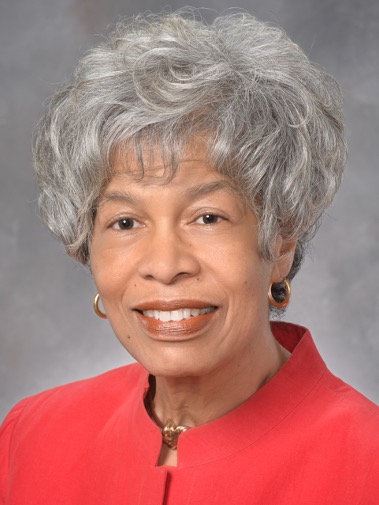
by Katherine Tyler Scott
- 14 October 2021
Share:
Years ago, I gave a talk to a group of business leaders about what I perceived was a “crisis of trust” in the personal, institutional, and community realms of our lives. At the time I was hopeful that it was temporary; I now believe that we have entered into a state of chronic crisis with a level of distrust that has become so corrosive it demands the attention of every leader.
There is no one definition of trust. What we have intuitively known, and what much of research supports, is that trust is a complex form of social, political, and psychological factors seen in systems and relationships. Trust is cognitive, emotional, and behavioral, and understanding it fully is an integrative not a reductionistic process.
If someone asks if you trust them, your answer would likely not be an unqualified, “Yes.” Much would depend on your knowledge of and history with the individual, your own experiences with trust, and the circumstances in which the question was asked. Context matters.
Context
Today’s complex and rapid pace of change is like being in a perpetual state of transition. Speed and agility in responding to problems have become a necessity for coping with this age of anxiety and ambiguity. The great leadership challenge is balancing the need to be nimble and productive with the need to be reflective and thoughtful in decision-making.
The great leadership challenge is balancing the need to be nimble and productive with the need to be reflective and thoughtful in decision-making.
Massive change has affected the way we organize and structure our lives, the places in which we work and worship, the way we deploy human and financial resources, our view of leadership and management, and the way we engage in decision-making and share authority.
One of the leaders I worked with in a company undergoing a massive organizational restructuring process had just been promoted to a new position making her one of the highest-ranking women in the company. She knew of her tendency for high control and realized this would not fit the current reality of the company. Instead, she wisely recognized that her “strong need for control in the past needed to shift from exerting power to exercising influence.”
Like we say to clients in positions of power, the so-called “subordinates” in your organization frequently know as much or more than those who manage them! Those being led are motivated by meaning not just money, by values not only benefits. They respect the leader’s technical expertise, and they trust because of the leader’s adaptive skills. This newly promoted leader understood that developing organizational trust was a top priority that required the adaptive skill of influencing not controlling; of leading change, not just managing it; and of resolving conflict, not denying or avoiding it. More and more leaders, like her, are recognizing the limitations of the top/down style and experimenting with a circular, more egalitarian style.
My team frequently hears questions from clients that reflect genuine puzzlement, but what lurks behind them is a need for a quick answer and a short time to resolve it: “How can we get our co-workers/employees to adopt and adapt to a different direction?” “How can we launch this training initiative with minimal upheaval?” “How can we get through reorganization without conflict, lower employee morale, and a loss of revenue?” None of these questions can be answered in sentences – they are adaptive challenges that require working with people in emotional states ranging from anger to joy! We understand the lure of technical fixes, but we also know that these questions speak to situations requiring leaders with self-awareness and adaptive skills.
Significant change does come with considerable ambiguity, anxiety, and ambivalence in individuals and organizations. This “Gap” in the change process is where people feel less trust, yet it is where the greatest need for trust exists. A Harvard Business Review survey of 450 executives of 30 companies from around the world found that about half of the managers participating didn’t trust their leaders (Hurley, 2006).
The trust needed to mobilize people to make changes takes time to develop, which is not a message most want to hear when undergoing the upheaval of change. Yet, this is the reality, and those who act as though they can skip over or through the process are at high risk of failing and in doing so cause a diminution of trust. In times of high anxiety, the urge for quick fixes increases. It is only the well differentiated leader who can lead others through disruption without sacrificing trust and their own integrity and that of the organization.
For a number of years Ki ThoughtBridge facilitated leadership and change management workshops at the Smith College Colloquium for women managers from the top tier of U.S. corporations. When asked about the most significant change in their roles/responsibility the major one identified was having oversight and responsibility for teams composed of people from various divisions in the company over whom they had no direct or formal authority. They recognized that if the norm for conducting business was through participative management and self-directed work teams, the development of trust within and across those teams was essential to achieving success.
As the top/down model of leadership is being reformed into more of an egalitarian one, more and more responsibility and authority is being shared throughout organizations. This makes the ability to build and sustain trust even more important if leaders want organizational viability and sustainable results.
Leaders in every sector are beginning to understand the impact of trust on individual and collective success.
Benefits of Trust
There are several significant benefits of trust. Trust is desirable because it affects the perceptions, attitudes, and the performance of individuals and groups. High trust cultivates a culture of innovation, positive relationships, and interdependence that inspires cooperation for the greater good.
High trust organizations adapt more quickly and have an advantage of attracting and retaining talent, whether an employee or a board member. These entities are reliable and effective and have demonstrated internal and external legitimacy, compliance, and accountability.
One example of a high trust company is Southwest Airlines. Although the company recently experienced a weekend of flight cancellations and delays, it was the only U.S. airline to have won the “Triple Crown” award five years in a row for best statistics for on-time arrivals, fewest customer complaints, and the least misplaced luggage. Prior to the pandemic, they had been profitable for 47 straight years (Hoopfer, 2020) and in 2005 the company’s stock was worth more than all other major U.S. airlines combined. They have never had to lay off employees — even after 9/11 when they, like other airlines, had customers canceling flights out of fear. The difference was many of them told Southwest to keep the money because they felt the company had been so reliable and dependent. The airline’s employees volunteered to give money, and, in spite of the company’s limiting the amount of money they could have deducted from their pay, employees gave over $2 million dollars.
The Three Characteristics of Trust
Even though there is not unanimity on a definition of trust, there are three characteristics that are essential to the development and maintenance of trust; all three must be present for high trust to exist.
Robert Bruce Shaw (1977), the author of The Balance of Trust, describes these three characteristics as results, integrity, and concern. Sociologists Roger Mayer, James Davis, and David Schoorman (1995) call them ability, benevolence, and integrity. David Lewis and Andrew Weigert (1985) describe them as three levels of trust: cognitive, emotional, and behavioral. To move toward a more integrated model of trust the words I use are competence, character, and compassion.
Competence
Competence is a combination of technical and adaptive capacities that enable individuals, groups, and systems to accomplish their purpose. It is a demonstrated ability to obtain results.
To earn trust in any organization means fulfilling your obligations and commitments. This is demonstrated competence. At the institutional level this means consistently accomplishing the mission and delivering tangible results. It is an ability to achieve (or exceed) established goals over time.
The measure of success varies, but the bottom line in competency-based trust is: When goals are met or exceeded trust increases. In order to gain trust, an individual or organization must be able to deliver on their commitment.
Competence includes the cognitive ability to evaluate trustworthiness and determine who and what can be trusted, to what extent, and in what circumstances. This is a component of the leadership capacity we describe as “reading reality truthfully in order to respond responsibly.”
Competence relies on the use of intellect and reason in making judgments and decisions based on objective knowledge and reason. It isn’t that simple because individuals bring to organizations varying degrees of emotional baggage based on early life experiences and previous relationships with caretakers, authority figures, and peers. It’s important for a leader to discern the emotional filters in the system so they can make sure they promote clear and honest communication.
One very savvy executive told us that whenever she is placed in a new position, she takes time to talk to everyone with whom she will be working. She asks three questions during the meeting:
- What might I need to know about you that will facilitate our work?
- What do you need to know about me?
- What advice would you give me?
Such questions begin to establish the communication, relationship, and trust necessary to create a culture of trust. This executive was confident that she could establish trusting relationships because she had identified her own emotional filters and had done her inner work.
In the paper, “The Structure of Optimal Trust,” (Wick, et al., 1999) the authors offer Aristotle’s ethic of the “golden mean” as a way to think about a position of trust as non-extreme and to eliminate an either/or understanding of trust. One example of having too much trust in something or someone is Enron, a company whose unethical and illegal practices went unquestioned up to its demise. The consequences that followed for those who placed their trust in the company were catastrophic.
An example of too little trust can be found in post- Hurricane Katrina New Orleans. When interviewing leaders in politics, government, philanthropy, economic development, and religion we observed that one of their greatest challenges was low trust. They had many familial groups with very tight boundaries and restricted membership and a long history of little communication between them. It was/is a tribal culture with bonding capital but little bridging capital. When the city began to rebuild it had to address the issue of trust.
Over time our accumulated experiences and stored emotional associations are transformed into perspectives that determine the propensity to trust. Managing the emotional elements of change are just as important as the content and cognitive functions. This is why adaptive skills are needed.
For most people trust is on a continuum from high trust to low trust. If too little trust exists, behaviors such as excessive control and micromanagement can strangle the creativity and innovation in people or the system. An environment of restriction and fear is developed in which opportunity for growth is not maximized. If there is excessive high trust, cognitive capacities can be dispensed with, and unquestioned behavior and assumptions can dominate judgment allowing unnecessary risks and reckless or illegal behavior.
If all cognitive content is removed from the emotional dimensions of trust, the results would be “blind faith.”
Compassion
Compassion is an awareness of the connection to and interdependence with others and a belief that the best interests of the other should be considered. It involves a high level of empathy and the capacity to genuinely care for another person, group, or organization. It shows concern for the needs and interests of others. This sense of caring is not ego-driven or motivated primarily by profit but rather by the needs of another. It is benevolent behavior and a sense of mutuality and trust. Trust engenders trust; when we act as if we trust another person, they are more likely to return the trust.
Compassion is based on genuine respect for others. It is this regard and emotional investment in people that enables them to reciprocate — not out of obligation but out of gratitude. The spirit of gratitude reinforces a spirit of generosity. The result is a culture of abundance and people willing to take risks that benefit a greater good.
Compassion is an emotional bond based on a belief in the moral character and/or goodwill of the other. The emotional investment made can be intense, and when a betrayal of trust occurs, the response is never just about the content, but also the damage to and/or loss of a relationship.
Character
The third element of trust is character, which is manifested in integrity, the consistency of action, and credibility born from congruence between values and actions. How an organization or an individual operates internally and externally reflects the degree of integrity a person or an institution possesses. Developing character comes from individual self-awareness and self-knowledge, clarity of core values and beliefs, and actions aligned with these. Trustworthy leaders believe in the inner life, and they tend to it. This is foundational to their capacity to “read reality truthfully.” They are very aware of their beliefs, attitudes, feelings, and perceptions, and are not prone to succumbing to the projections of others.
The individual or organization is conscious of the ways their values are manifest in day-to-day behavior and relationships. Gaining alignment between organizational mission, vision, values, and behavior is vital to creating and maintaining organizational trust.
Edgar Schein says that the major function of leadership is the creation of culture. In my view, this responsibility is not the leader’s alone, but there is no denying the power and being of the leader on individuals and systems. The leader who has a discipline of inner work has confronted unacceptable aspects of themselves and will not project them onto others and/or onto the culture via attacking, blaming, scapegoating, and personalization of criticism. If they are out of touch with themselves, they cannot engender trust.
People bring differing beliefs about trust into their professional and voluntary work. It is the role of leadership to address these differences through clear vision and values that overarch everything. Leaders with character view trust as a way to increase their and the organization’s effectiveness but understand it is not a guarantor of success. When failure happens, they acknowledge and explain it, take responsibility for it, and work progressively to accomplish the goals, equipped with new insight. This builds trust.
Summary
In Soul at Work, Margaret Benefiel (2005) shares a number of examples of organizations in which purpose, culture, and identity transcend and enhance organizational performance and success. One of these organizations is Reell Precision Manufacturing Company whose first principle is “We are committed to do what is right even when it does not seem to be profitable, expedient, or conventional.”
Their top priority is the growth and development of their employees. The company trusts their co-workers to do their best by “freeing them to express the excellence that is within all of us.” The leaders of Reell understand that the company must be profitable but have consistently refused to sacrifice its principles for short-term profits.
Founded in 1970 by Dale Merrick, Lee Johnson, and Bob Wahlstedt, the company is committed to discerning the will of a higher power in its business decisions and publicly states that they “strive to make decisions consistent with God’s purpose for creation according to individual understanding.” Out of this belief has come a practice of decision-making based on respectful listening, patient waiting, and openness to learning. This is counter to the way most companies engage in decision-making. Studies show that half of the decisions made in American companies fail, and the leading reason for failed decision-making is premature commitments caused by impatience, lack of discernment, and unwillingness to slow down the process.
When Reell began it had very little capital. It now has over 225 employees and annual revenue of over $25 million. During several economic downturns in the 1970’s and at turn of this century it did not lay off any of its employees. The leaders and co-workers developed options that were consistent with their stated values.
Executive pay at Reell was limited to about 7-10 times that of the lowest-paid employee — a message that affirms the belief in the value of everyone’s contributions. It is one of the practices that keeps the company within the golden mean of trust.
In summary, these are the practices of high trust leadership:
- Adaptive leadership skills — the mobilization of people to engage in real work, management of group/system anxiety and ambiguity, the capacity to form cohesive community, and the ability to resolve conflict.
- Performance at a high level and the capacity to attain or exceed desired results.
- Genuine concern, care, and empathy for others.
- Alignment and congruence between values, beliefs, and actions.
- Honest, open, and direct communication.
- Engagement in inner work — self-awareness and insight, authentic and ethical actions, self management of anxiety and ambiguity.
- Shared leadership — dispersed power and authority at many levels.
- Respectful processes of listening and discernment.
- Capacity to learn — openness to learn from success and failure.
- Empowerment of others — ability to influence not control.
- Sense of abundance — propensity to give without expectation of reciprocity.
- Belief in the transcendent— a sense of faith in something larger than the self, an appreciation of the sacred.
The particular form that these three characteristics — competence, compassion, and character — take will vary according to context, history, and culture, but striving to integrate and incorporate them will enable the development of the generations of trustworthy individuals and organizations.
Resources & References
Benefiel, M. (2005). Soul at Work, Seabury Books, Church Publishing Company.
Dirks, K.T., & Ferran, D.L. (2001). The Role of Trust in Organizational Setting. Organizational Science, Vol. 12, No. 4, pp.450-467.
Hoopfer, E. (2020, August 15). Southwest Airlines CEO discusses 47-year profitability streak, HQ employees working from home and more. Houston Business Journal. https://www.bizjournals.com/houston/news/2020/08/15/southwest-47-years-profitable-work-from-home.html
Hurley, R.F. (2006). The Decision to Trust. Harvard Business Review, September 2006. https://hbr.org/2006/09/the-decision-to-trust
Lewis, J.D., & Weigert, A. (1985). Trust as a Social Reality. Social Forces, Vol 63, No.4., pp. 967-985.
Mayer, R.C., Davis, J.H., & Schoorman, F.D. (1995). An Integrative Model of Organizational Trust. The Academy of Management Review, Vol. 20, No.3, pp.709-734.
McKnight, D.H., Commings, L.L., & Chervany, N.L. (1998). Initial Trust Formation is New Organizational Relationships. The Academy of Management Review, Vol. 23, No. 3., pp. 473-490.
Shaw, R.B. (1977). Trust in the Balance, Building Successful Organizations on Results, Integrity, and Concern. Jossey-Bass.
Wick, A.C., Berman, S.L., & Jones, T.M. (1999). The Structure of Optimal Trust: Moral and Strategic Implications. The Academy of Management Review, Vol. 24, No.1., pp.99-116.

Before beginning her tenure at KI ThoughtBridge, Katherine Tyler Scott founded and served as President of Trustee Leadership Development, Inc., a resource center for governance leaders and not-for-profit organizations. Katherine is a past chair of the ILA board and convener of the ILA Applied Leadership Global Learning Community. She previously directed the Lilly Endowment Leadership Education Program, a statewide leadership education initiative for professionals in youth service, and she also developed leadership programs and resources for the Community Leadership Association.

